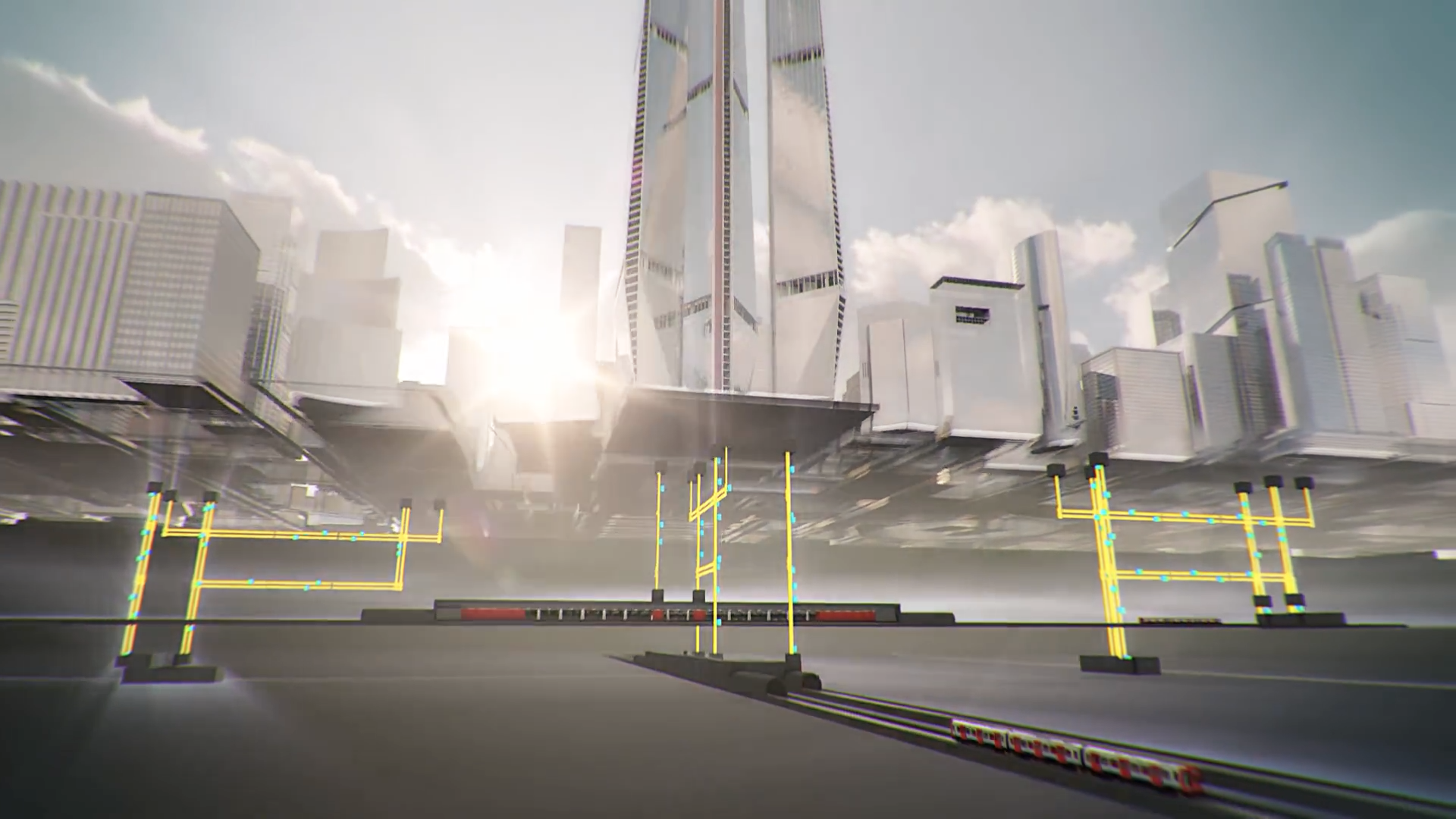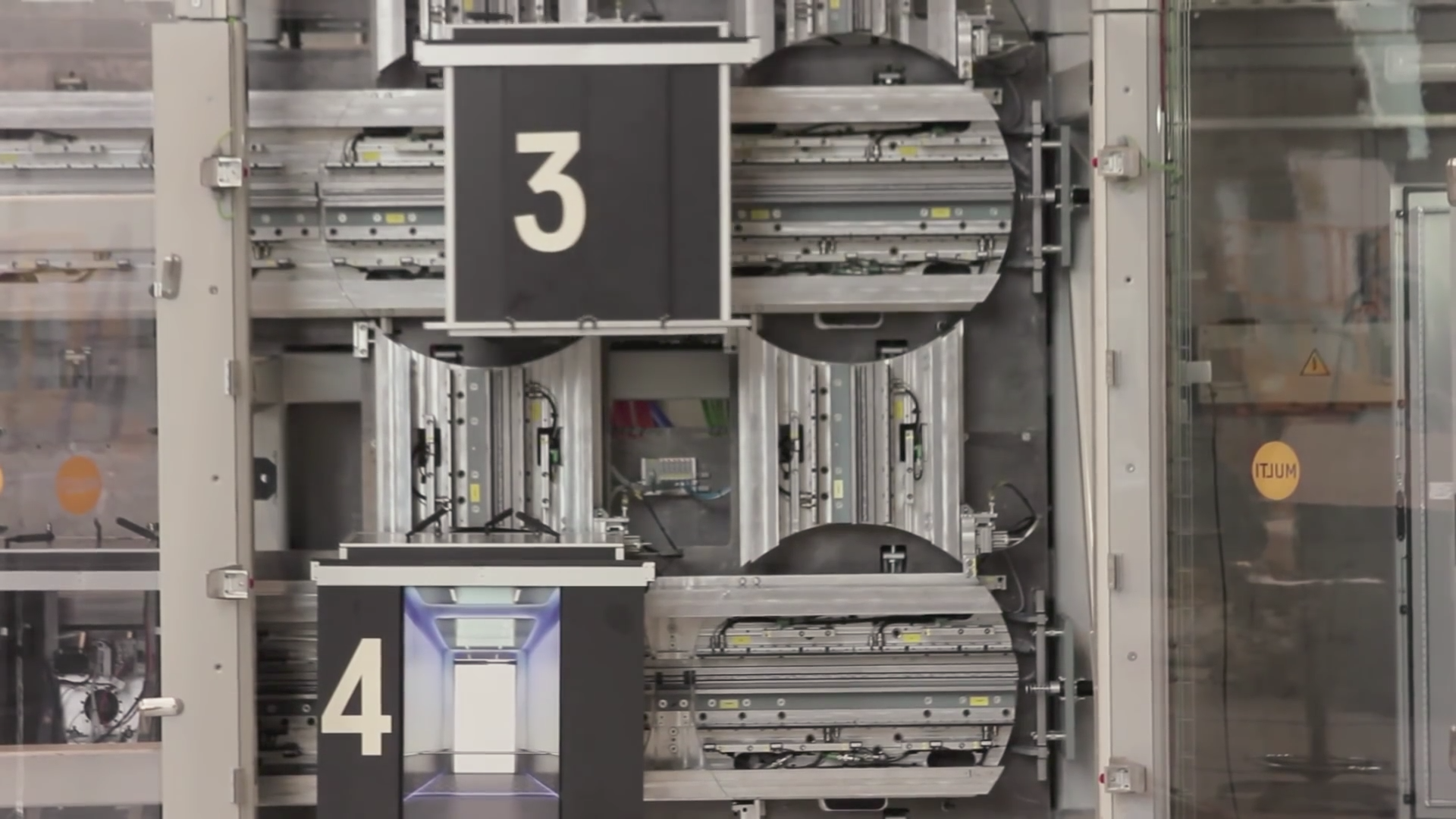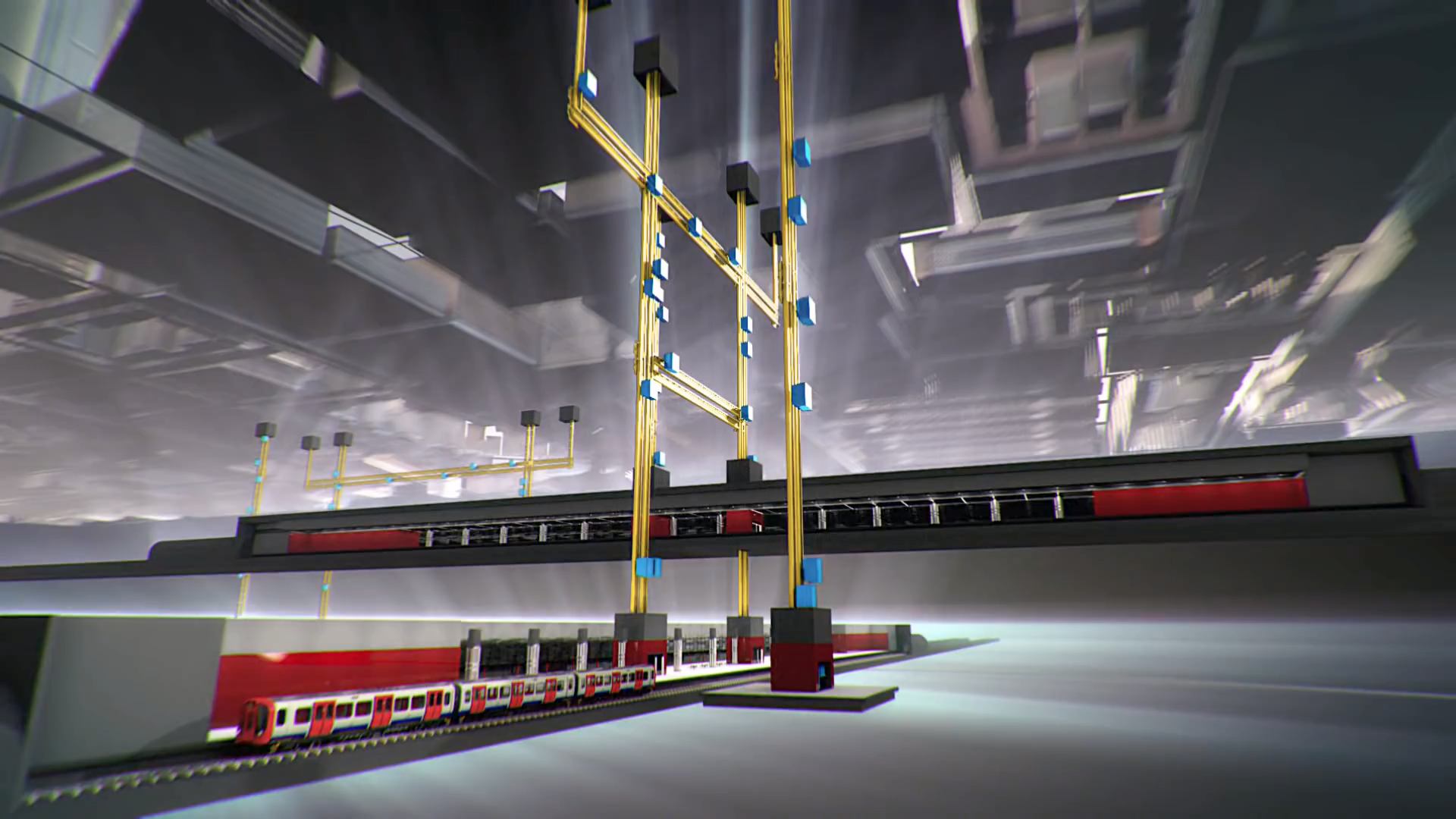AN ELEVATOR IS NOT JUST FOR THE DEVELOPMENT OF HIGH-RISE BUILDING ANYMORE, BUT IT ALSO BRINGS THE NEW POSSIBILITY OF VERTICAL TRAFFIC THROUGH THE LAYERS OF THE CITY.
TEXT: KANOKWAN TRAKULYINGCHAROEN
PHOTO COURTESY OF THYSSENKRUPP
(For English, please scroll down)
ลิฟต์คือหนึ่งในเทคโนโลยีจากศตวรรษที่ 19 ที่เปลี่ยนชีวิตของคนตามเมืองใหญ่ในโลกไปตลอดกาล ตึกสูงจะไต่ขึ้นไปเสียดฟ้าไม่ได้ด้วยเพียงลำแข้งของโครงสร้าง ไม่ว่าโครงสร้างนั้นจะเป็นเหล็กหรือคอนกรีต ถ้าไม่มีลิฟต์ที่คอยขนส่งผู้คนขึ้นไปที่ระดับความสูงที่ขามนุษย์ทั่วไปขึ้นไปไม่ถึง และเทคโนโลยีงานระบบท่อ และเครื่องกลอื่นๆ อย่างเช่น ระบบปรับอากาศ ที่เข้ามาเสริมให้การใช้ชีวิตเหนือระดับพื้นดินขึ้นไปนับร้อยเมตรเป็นไปได้

เทคโนโลยีลิฟต์ทำให้การพัฒนาเมืองในทางแนวตั้งเกิดขึ้นได้อย่างรวดเร็วมากขึ้น เกิดเป็นภูมิทัศน์เมืองที่มีตึกสูงขึ้นหนาแน่นตามเมืองใหญ่ทั่วโลก ในขณะที่ 65% ของประชากรทั่วโลกอาศัยตามเมืองใหญ่และสัดส่วนนี้จะขยับขึ้นเป็น 68%ในปี 2050 ซึ่งนั่นก็หมายความว่า ประชากรที่ใช้ชีวิตอยู่ในเขตเมืองจะเพิ่มขึ้นไปจากเดิมอีกกว่า 2.5 พันล้านคนในปี 2050 และเกือบ 90%ของจำนวนที่เพิ่มขึ้นมาจากทวีปเอเชียและแอฟริกา [1] คำถามก็คือเราจะเอาพื้นที่จากที่ไหนมาจัดการชีวิตในเมืองของเรากัน?
เทคโนโลยีลิฟต์ทำให้การพัฒนาเมืองในทางแนวตั้งเกิดขึ้นได้อย่างรวดเร็วมากขึ้น เกิดเป็นภูมิทัศน์เมืองที่มีตึกสูงขึ้นหนาแน่นตามเมืองใหญ่ทั่วโลก ในขณะที่ 65% ของประชากรทั่วโลกอาศัยตามเมืองใหญ่และสัดส่วนนี้จะขยับขึ้นเป็น 68%ในปี 2050 ซึ่งนั่นก็หมายความว่า ประชากรที่ใช้ชีวิตอยู่ในเขตเมืองจะเพิ่มขึ้นไปจากเดิมอีกกว่า 2.5 พันล้านคนในปี 2050 และเกือบ 90%ของจำนวนที่เพิ่มขึ้นมาจากทวีปเอเชียและแอฟริกา คำถามก็คือเราจะเอาพื้นที่จากที่ไหนมาจัดการชีวิตในเมืองของเรากัน?

ในบทความก่อนหน้าของ art4d MATERIAL เราได้พูดถึงเทคโนโลยีในการออกแบบท่อระบายอากาศในระบบท่อน้ำทิ้งล่าสุดจาก GEBERIT SUPERTUBE [2] กันไปแล้ว วันนี้เราจะมาคุยกันต่อถึงเทคโนโลยีอีกตัวที่มีความสำคัญต่อการเติบโตของเมืองในทางตั้งไม่แพ้กันอย่างเทคโนโลยีลิฟต์ MULTI จาก thyssenkrupp ที่จะมาปลดปล่อยการออกแบบเมืองทางตั้งให้มีอิสระจากเงื่อนไขการออกแบบที่ถูกกำหนดโดยข้อจำกัดในการออกแบบปล่องลิฟต์ในแบบเดิมๆ
เพราะ MULTI เป็นลิฟต์ที่ไม่ใช้ระบบเคเบิลในการเคลื่อนตัว แต่นำเอาเทคโนโลยี linear motor ที่พัฒนาขึ้นมาเพื่อใช้กับรถไฟพลังแม่เหล็กหรือรถไฟแบบ Maglev (magnetic levitation train ‘Transrapid’) เข้ามาแทนที่ จึงทำให้มันเคลื่อนที่แบบเดียวกันกับรถไฟความเร็วสูง และเดินทางไปในอาคารได้ทั้งในทางแนวตั้งและแนวนอน นอกจากนี้มันยังช่วยลดขนาดพื้นที่เพื่อรองรับระบบลิฟต์ในอาคารจากแบบเดิมลงไปได้อีกถึง 50%

เมื่อเรานำเอาความก้าวหน้าทางเทคโนโลยีทั้งหมดเข้ามาทดรวมกัน บวกกับเทคโนโลยีเซนเซอร์ [3] ที่เริ่มมีราคาถูกลงอย่างรวดเร็วและมีความละเอียดแม่นยำในการตรวจจับมากขึ้น ความสัมพันธ์แบบสองทางระหว่างอาคาร ระบบจักรกล สมองกล และคนย่อมไม่ใช่เรื่องไกลตัวเราอีกต่อไป
ระบบอาคารตรวจจับปริมาณผู้คนและคำนวณการขนส่งต่างๆ ภายในอาคารให้ใช้เวลาน้อยลง เพื่อให้การใช้เวลาที่เป็นหนึ่งในทรัพยากรที่แพงที่สุดของมนุษย์ให้เกิดประสิทธิภาพสูงสุด ผู้คนมีชีวิตที่ไหลลื่นไร้แรงเสียดทานจนถึงวันหนึ่งในอนาคตอันใกล้พวกเขาอาจต้องมานั่งกลุ้มว่า เวลาว่างในวันนี้เราจะเอาไปทำอะไรกันดี

The elevator is one of the technologies from the 19th century that changed the lives of people in the big cities around the world forever. The tall buildings would not have climbed up in the sky with a sole force of building structure, whether the structure is steel or concrete, if there would be no elevator that transport people up to the height where is generally unreachable by the human legs or the mechanical and electrical engineering technology such as air conditioning systems, which come to lift the people’s life above the ground to see the new possibility of living in megacities.

Elevator technology, as one of several factors, allows the concept of a vertical city to develop more quickly and brings about the high-density urban landscape in large cities around the world. While 65% of the world’s population lives in large cities and the proportion will move up to 68% in 2050, which means the population in urban areas will increase by more than 2.5 billion people in 2050 of which nearly 90% of the increase comes from Asia and Africa. [1] The question is, how can we find new space to serve the growing population for our city?
ELEVATOR TECHNOLOGY, AS ONE OF SEVERAL FACTORS, ALLOWS THE CONCEPT OF A VERTICAL CITY TO DEVELOP MORE QUICKLY AND BRINGS ABOUT THE HIGH-DENSITY URBAN LANDSCAPE IN LARGE CITIES AROUND THE WORLD. WHILE 65% OF THE WORLD’S POPULATION LIVES IN LARGE CITIES AND THE PROPORTION WILL MOVE UP TO 68% IN 2050, WHICH MEANS THE POPULATION IN URBAN AREAS WILL INCREASE BY MORE THAN 2.5 BILLION PEOPLE IN 2050 OF WHICH NEARLY 90% OF THE INCREASE COMES FROM ASIA AND AFRICA.
In the previous article of art4d MATERIAL, we discussed the design of the latest technology of wastewater system SUPERTUBE from GEBERIT [2]. Today we will talk about another technology that is not less important to the growth of the city. The MULTI elevator technology from ThyssenKrupp will set the design of high rise building free from the conventional conditions that are determined by the limitations of elevator design.

As MULTI is an elevator that does not use the cable system to move, instead it uses a linear motor technology that was developed to use with a Maglev train or magnetic levitation train ‘Transrapid.’ Therefore it can run in the same way as a high-speed train and travel both vertically and horizontally. Besides, it also helps architects or engineers to reduce 50 % of the space to accommodate the elevator system in the building, comparing to the standard type.
When we bring all the advanced technologies together plus the sensor technology [3] that has started to be cheaper, faster and has more accurate detection resolution, the two-way relationship between buildings, mechanical systems, machine learning and people is no longer far away from our lifestyle.
Building systems can detect the number of people at an exact time of the day and calculate to find the best solution for better distribution of traffic within the building. People will spend less time and make use of time at best. Time is one of the most expensive resources of human beings. Imagine, people live in the flow without friction. One day soon they may have to sit and chat what shall we do with our free time today as a greeting sentence. Maybe?


